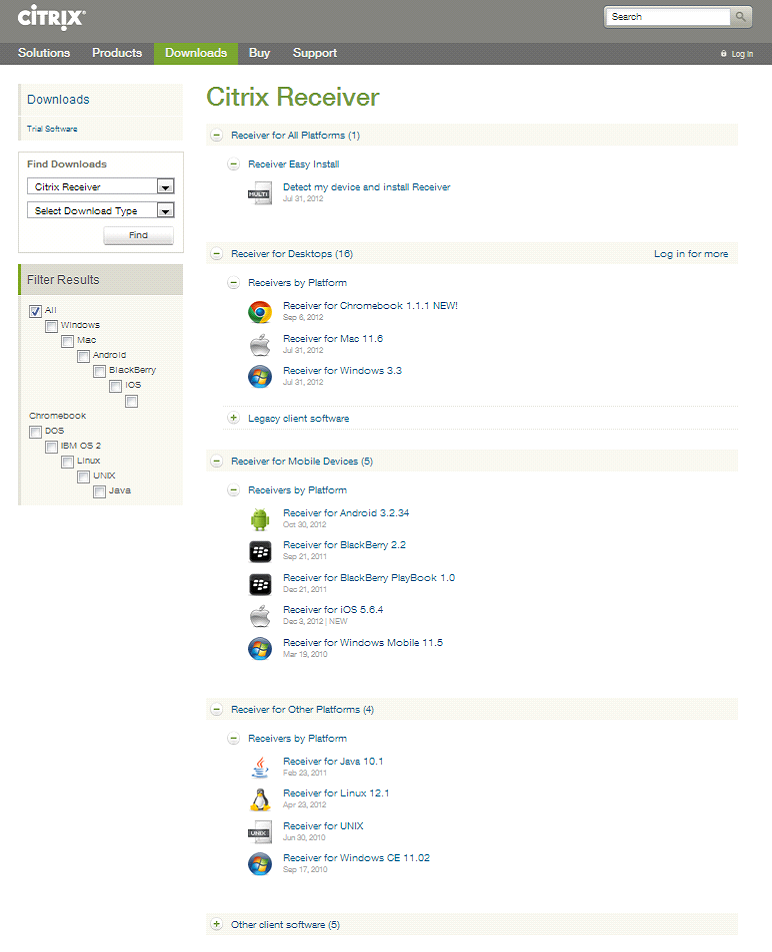
The other authentication methods described here are defined by the store’s authentication methods. Configure these authentication methods independently for each Citrix Receiver for Web site. † Citrix Receiver for Web site authentication methods marked † are not defined by settings in the store’s authentication methods. In the Actions pane, click Manage Receiver for Web Sites, click Configure, and choose Authentication Methods to specify the access methods that you want to enable for your users. Select the Stores node in the left pane of the Citrix StoreFront management console and select the relevant store that you want to modify from the results pane.
CITRIX RECEIVER MUSC WINDOWS
On the Windows Start screen or Apps screen, locate and click the Citrix StoreFront tile. This action allows you to specify a subset of authentication methods for each Receiver for Web site. Use the Authentication Methods task to assign authentication methods for users connecting to the Citrix Receiver for Web site. Propagate your configuration changes to the server group so that the other servers in the deployment are updated. Ensure that the Citrix StoreFront management console is not running on any of the other servers in the deployment. Important: In multiple server deployments, use only one server at a time to make changes to the configuration of the server group. For more information, see Configure Citrix Receiver for Web sites using the configuration files. Some advanced settings can only be changed by editing the site configuration files. The tasks below enable you to modify settings for your Citrix Receiver for Web sites. (Esclusione di responsabilità))Ĭitrix Receiver for Web sites enable users to access stores through a webpage.

Questo articolo è stato tradotto automaticamente. (Aviso legal)Įste artigo foi traduzido automaticamente.

(Clause de non responsabilité)Įste artículo ha sido traducido automáticamente. (Haftungsausschluss)Ĭe article a été traduit automatiquement. This article has been machine translated.ĭieser Artikel wurde maschinell übersetzt. Questo contenuto è stato tradotto dinamicamente con traduzione automatica. (Aviso legal)Įste texto foi traduzido automaticamente. (Clause de non responsabilité)Įste artículo lo ha traducido una máquina de forma dinámica.

(Haftungsausschluss)Ĭet article a été traduit automatiquement de manière dynamique. The nearly 26,000 MUSC family members include world-class faculty, physicians, specialty providers, scientists, students, affiliates and care team members who deliver groundbreaking education, research, and patient care.This content has been machine translated dynamically.ĭieser Inhalt ist eine maschinelle Übersetzung, die dynamisch erstellt wurde. MUSC has a total enterprise annual operating budget of $5.9 billion. News & World Report named MUSC Health University Medical Center in Charleston the No. In 2023, for the ninth consecutive year, U.S. Patient care is provided at 16 hospitals (includes owned and equity stake), with approximately 2,700 beds and four additional hospital locations in development more than 350 telehealth sites and connectivity to patients’ homes and nearly 750 care locations situated in all regions of South Carolina. MUSC also leads the state in federal and National Institutes of Health funding, with more than $220 million.Īs the health care system of the Medical University of South Carolina, MUSC Health is dedicated to delivering the highest-quality and safest patient care while educating and training generations of outstanding health care providers and leaders to serve the people of South Carolina and beyond. MUSC brought in more than $298 million in research funds in fiscal year 2022, leading the state overall in research funding. Each year, MUSC educates more than 3,200 students in six colleges – Dental Medicine, Graduate Studies, Health Professions, Medicine, Nursing and Pharmacy – and trains more than 900 residents and fellows in its health system. Founded in 1824 in Charleston, MUSC is the state’s only comprehensive academic health system, with a unique mission to preserve and optimize human life in South Carolina through education, research and patient care.


 0 kommentar(er)
0 kommentar(er)
